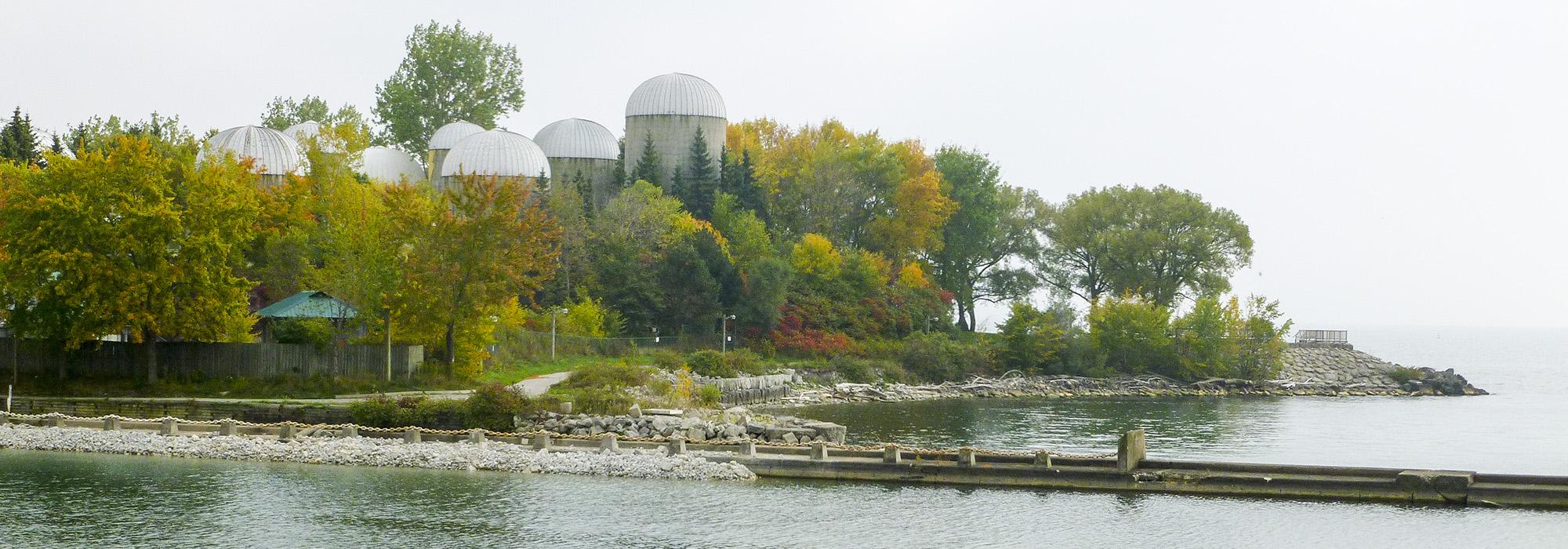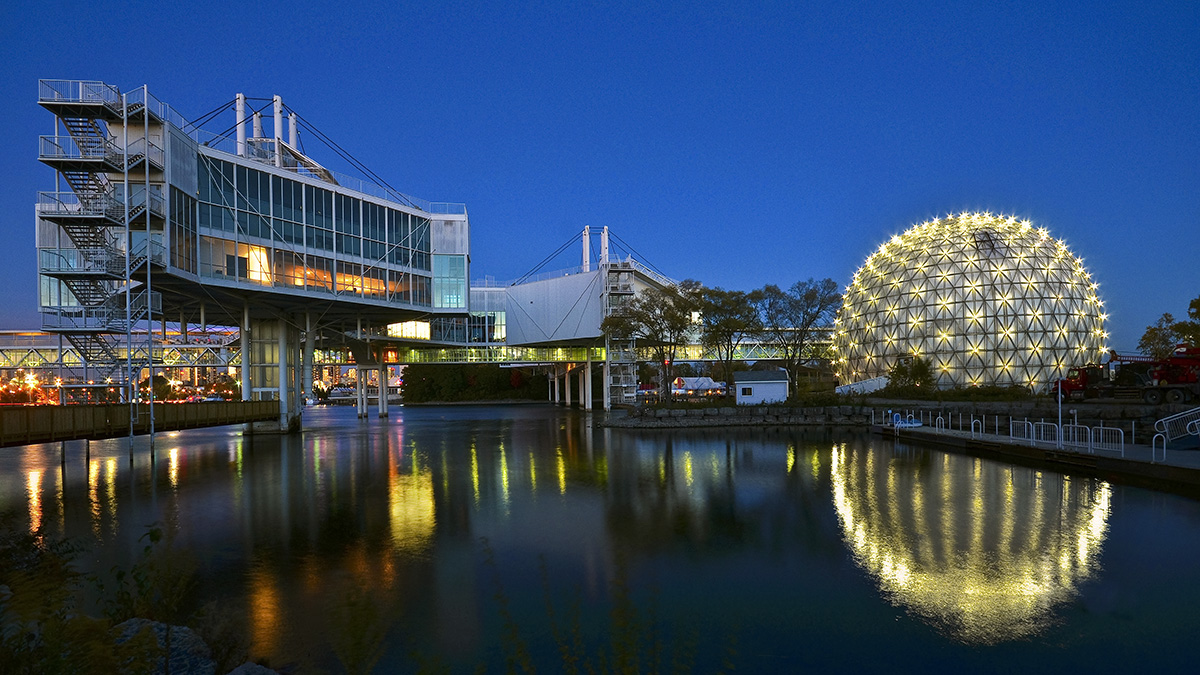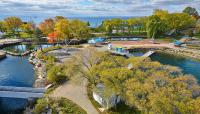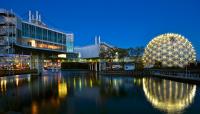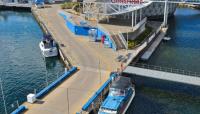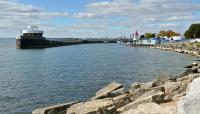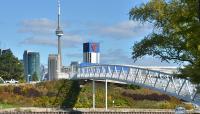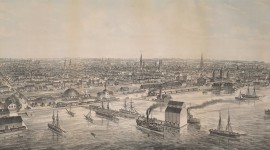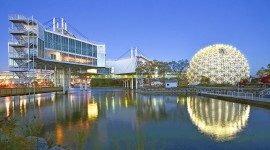Landscape Information
Constructed on two man-made islands in Lake Ontario adjacent to Toronto’s western waterfront, this ensemble of interconnected landscape, architectural, and engineering features was designed to espouse the Provincial identity. Inspired by the 1967 International and Universal Exposition in Montreal, the complex was designed by architect Eberhard Zeidler and landscape architect Michael Hough, opening to the public in 1971. With the importation of construction debris and the use of sunken ships to create an artificial reef, the site eventually consisted of 28 hectares of land artfully shaped to enclose lagoons, a marina, and entertainment venues.
Accessible via bridges, the islands include a core of futuristic architectural features enveloped by naturalistic woods, wetlands, and canals. Five architectural “pods” served as flexible exhibition spaces: Suspended over the water and related to one another by a superstructure, these were also connected to a spherical dome, the Cinesphere, which housed the world’s first IMAX theater. Nearby, the Forum comprised a tented musical venue with a rotating stage (replaced in 1994 by the larger Molson Amphitheatre). The Children’s Village, designed by Eric McMillan, provided adventure play areas complemented by a nearby water park. A circuitous network of meandering paths traverses the islands, providing sequenced views of the architecture and landscape, as well as dramatic views of the Toronto skyline and Lake Ontario. Over the years, visitation waned, and maintenance costs increased. In 2012 Ontario Place was partially closed, and the site was subsequently listed as a heritage property under the Ontario Heritage Act.



